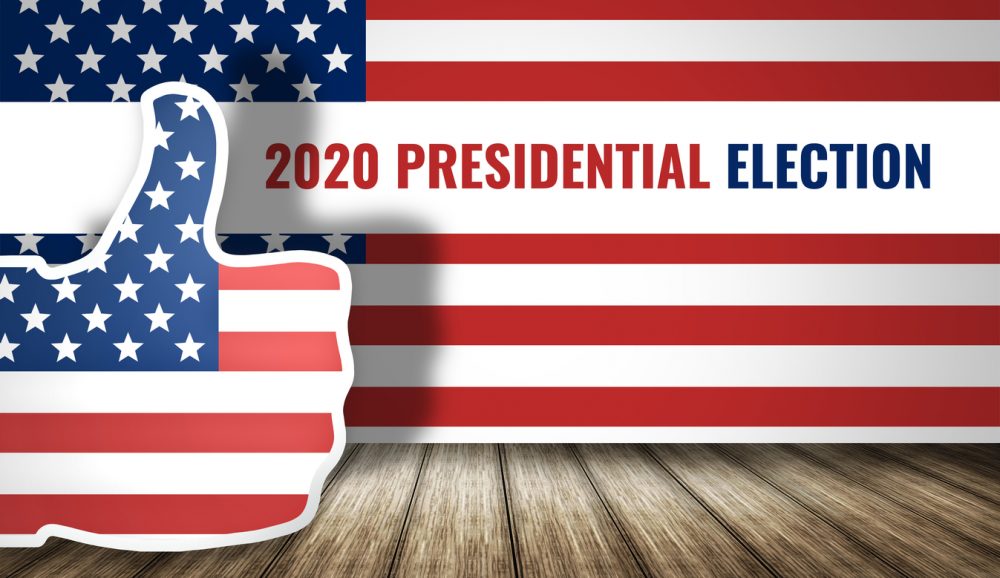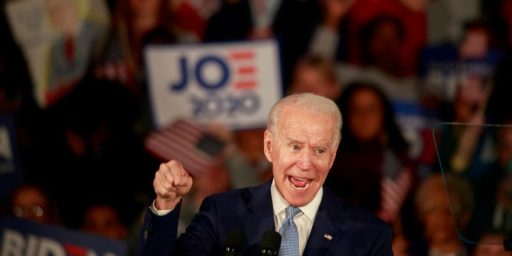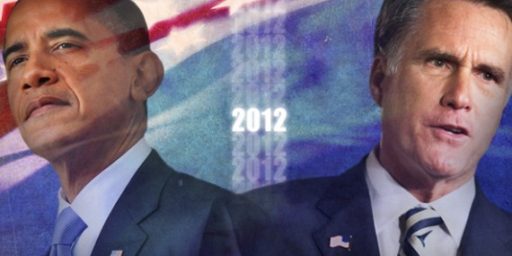AZ and PA
Trump needs them both.

Harry Enten explains at CNN Why this race likely comes down to Arizona and Pennsylvania.
Trump’s best path to stop Biden is for there to be a larger than average polling error in Arizona and especially Pennsylvania.
The electoral math is pretty simple. Biden needs to find 38 electoral votes on top of the 232 in the contests that Hillary Clinton won in 2016. He’s likely to win the one from Nebraska’s 2nd Congressional District. Remember, the state of Nebraska allocates an electoral vote to the winner of each of its congressional districts.
On top of that, Biden holds clear and significant leads in two states Trump won by less than a point in 2016: Michigan and Wisconsin. A CNN/SSRS poll on Saturday put Biden up 12 points in Michigan among likely voters, while Biden led in Wisconsin by 8 points in a CNN/SSRS poll and 11 points in a New York Times/Siena College poll released Sunday.
Those two states are worth a combined 26 electoral votes. Add in Nebraska’s 2nd Congressional District, you get Biden to 259 electoral votes.
So Biden needs 11 electoral votes. Guess who has 11? Arizona, that’s who.
Pennsylvania has 20.
Of course, there is a list other possible pickups.
Florida at 29, NC at 15, and GA at 16.
But if Biden can win all of HRC’s states plus WI and MI, which as per above appear to be safely in his camp, then he needs PA, usually a blue state, or a flip of AZ.
Enten focuses on AZ and PA as follows:
Let’s start with Arizona. Biden had a 6 point advantage in a New York Times/Siena College poll put out on Sunday. CNN/SSRS had Biden at 50% and Trump at 46% on Saturday. The average poll overall has Biden up by 4 points. So Trump needs a larger than average polling error in a state where there hasn’t been a tradition of polling errors favoring Republicans.
If Trump is able to overcome that, he’ll still need to go into Pennsylvania and win there. (There’s a reason Trump has been barnstorming the state.)
Three polls out this weekend show similar results in the Keystone State. Biden was up 5 points in a Muhlenberg College poll (well within the poll’s 5.5 point margin of error), 6 points in a New York Times/Siena College poll and 7 points in an ABC News/Washington Post poll.
Overcoming an average 6 point polling deficit is possible. It’s quite hard though. It’s basically a little less than the chance of flipping a coin in the air three times and having it land on heads all three times.
It is actually pretty amazing that an incumbent president has essentially zero chance of picking up new states and is hanging on by his fingernails to a diminished version of his 2016 map.
Although, by the same token, Trump lost the 2016 popular vote by almost 3 million voters and has done precisely nothing to expand his support. So, I guess it really isn’t all that amazing.
Enten also discusses the national polls and potential errors:
As I’ve noted before, this isn’t 2016. Trump needs something to have a bigger polling miss. See it’s not only the state polls that need to be off by a considerable margin. Trump has to hope the national polls are off by plenty, too.
He’s down about 9 points nationally. An NBC/Wall Street Journal poll emphasizes that point with Trump trailing by 10 points in their final national poll released Sunday. Trump was down just 4 points in their final 2016 poll.
The national polls were quite good in 2016. And although the national margin and the margin in the state that ultimately determines the winner can differ (see 2016), there won’t be a 9 point gap between them. Nothing like that has ever been close to happening since the Republican Party was founded.
That means that whatever polling error hits the swing states needs to happen in the national polling as well, unlike in 2016.
If Trump wins it will likely mean that the entire polling industry will need to be blown up and reconstructed from the ground up because there will have been a deep and wide systematic error.






And of course, PA is a state that we don’t expect to report results quickly. It could be several days, in fact, before we get solid numbers from them.
Why just AZ and PA? NC is another Trump 2016 state that would spoil Trump’s day if Biden picks it off. NC results should be in on election night.
@charon:
Good point!
I’ve been obsessing about PA; but as you say if NC breaks for Biden, he could win even without AZ and PA so long as the upper MidWest is safe; and the polls seem to be WI/MN/MI by beyond margin of error.
The economist poll aggregate has Biden +3.0 in AZ, +2.4 in NC, so not a whole lot of difference.
(Except my own hunch Biden more likely to outperform the polls in AZ than NC).
@Steven
Honestly, I think the more likely explanation will be massive suppression and fraud. I expect him to lose by a considerably wider margin nationally than in 2016 but the GOP controls the voting apparatus in a lot of close states.
@James Joyner: I should have caveated that apart from a fraudulent win, etc.
Or, to put it another way, in my mind stealing an election isn’t actually winning in the sense I was using the term above.
If it were to come down to AZ and is close, we might not know until next week. Recall that Sinema eventually won by two percentage points in 2018, but the AP didn’t call the race until the following Monday. Unless they changed something, they count slowly as the late ballots come in. Making it more interesting, the late ballots skew Democratic. Not as bad as California, but the effect is still there.